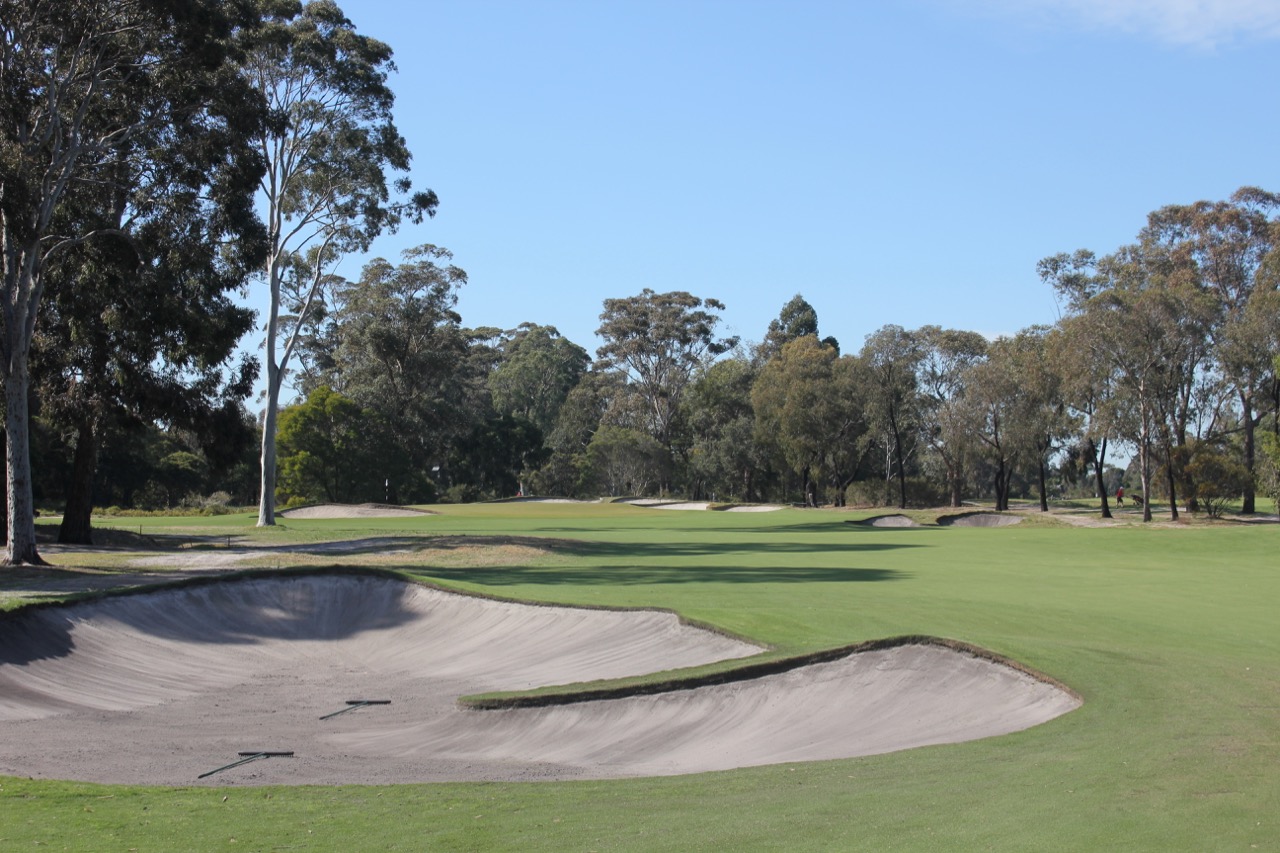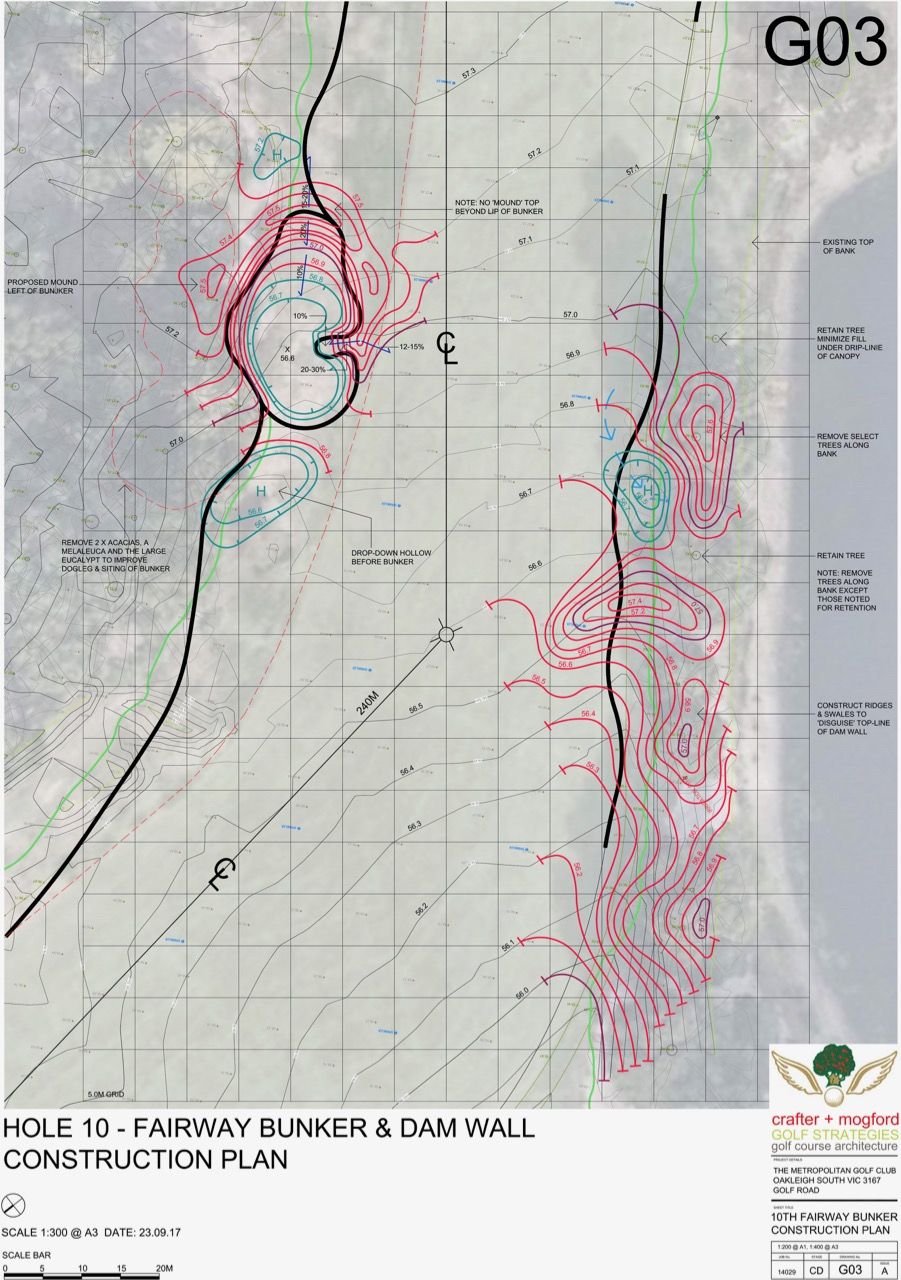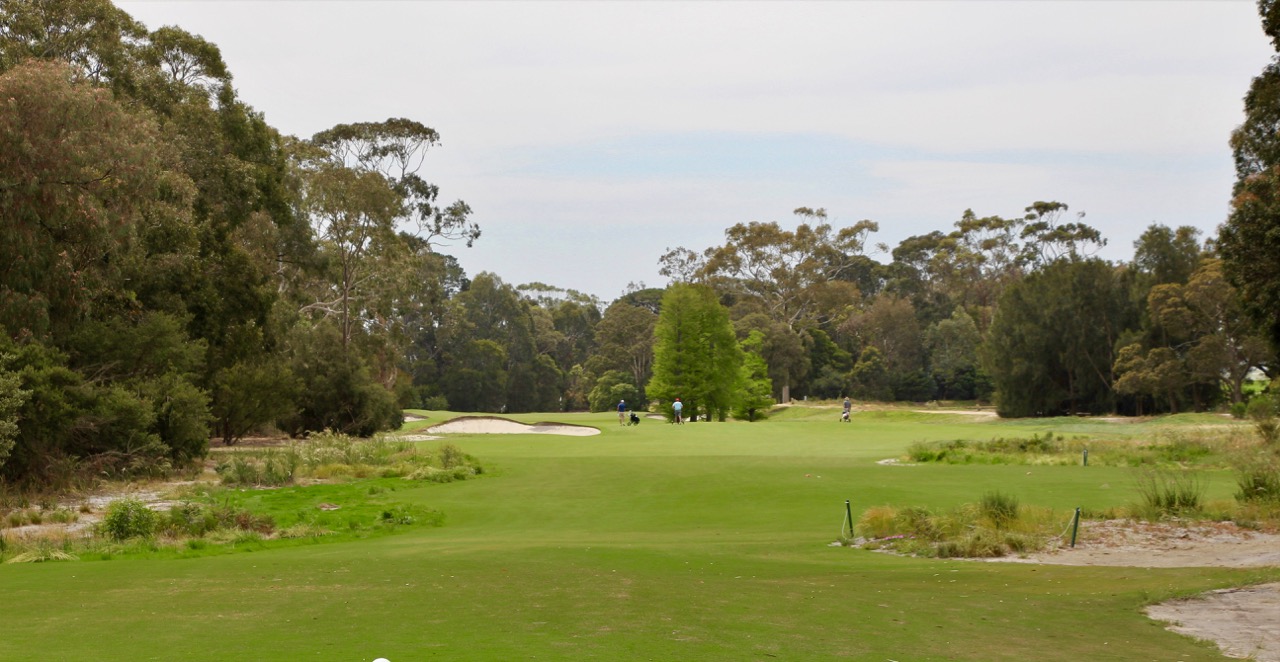 Metropolitan GC- 10th hole drive bunker
Metropolitan GC- 10th hole drive bunker
Introduction
Crafter & Mogford Golf Strategies are one of Australlia's premier golf architecture firms.
Their work is meticulous and strategically strong, and in recent years some of Australia's iconic courses have opted to use their services to bring those courses into the modern age.
The results have been stunning!
Sorrento, Barwon Heads, and now Metropolitan members are enjoying some impressive design work and professional implementation.
To a certain extent Crafter & Mogford have flown under the radar, but this may all be about to change
Their recent work on Metropolitan- particularly the big changes on the 10th hole and the 17th tee- will be under the world spotlight when the World Cup is televised globally in a few weeks time.
There is no doubt it will come up very very well
And perhaps an even more impressive project will start making the headlines in the new year- a wonderful new links course in Tasmania called 'Arm End'.
Watch this space!
For your interest I have attached an article written by Paul Mogford about the process at Metropolitan. This article was presented to both the course superintendants and golf course architects associations of Australia
Peter Wood
The Travelling Golfer
Design Preparations for the World Cup By: Paul Mogford Date: 16thOctober 2018
 Paul Mogford
Paul Mogford
In 2014 when Crafter + Mogford were briefed to undertake a course enhancement plan for The Metropolitan Golf Club there was no major tournament in the wind – however the desire was always strong. Accordingly, Neil and I were charged with ensuring our recommendations catered for challenging the professional while maintaining our strong focus on the enjoyment of members. After all, for the majority of time, it is the members’ course.
By the time the World Cup was announced to be played at Metropolitan in November of 2018, our plans for course improvements were well underway and it was perhaps fortuitous that the Club’s priority was the 10thhole – while having notable challenge, it was in need of renovation to bring it more in line with the architecture of the ‘best of Metro’. Throughout our early conversations with the Club it was our contention that the course contained a number of outstanding holes - most of which occurred on the front nine, being the 1st, 2nd, 3rd, 5th, 7th, 8thand 9th. While the 11th, 15thand 18thholes stood out on the back nine – the balance of holes needed varying degrees of modification and or improvement. This disparity between the two nines was largely a consequence of its history where compulsory acquisition of land saw the loss of the back nine holes. In 1959American Dick Wilson was charged with the difficult task of laying out similar calibre holes on less conducive land which, for the most part, was lower lying and less sandy in nature.
Many courses have two years to prepare for such a prestigious tournament as the World Cup of Golf. Metropolitan has had just the one, while still in the final stagesof installing a state of the art irrigation system. As many of you can well imagine, this placed serious pressure on the available time to make appropriate preparations. With the PGA Tour’s decision coming in October of 2017, we lost the second winter and part of spring to undertake course alterations and other turf and landscape improvements. Very quickly the Club decided on a short list of course works which fell broadly into two categories. Firstly, changes to course architecture. Secondly, turf and landscape improvements identified by both the club and the PGA Tour tournament organisers. As well as ensuring the greens, fairways and tees were immaculate, there were also the many and varied smaller details that collectively result in an overall meaningful outcome. Details that the average spectator may not notice, however, in our view, these make for the type of mercurial course and surrounds one expects of a top caliber course such as Metropolitan.
Praise for the Crew
Can the efforts of a course maintenance crew be praised enough, not only for this tournament but any event really? Course Superintendent David Mason and his team have, of course, worked tirelessly to get the course looking so well prepared for the golfing eyes of the world. While there are many who comprise the team, noteworthy are the efforts of; Nick Launer for tirelessly supporting David, through keeping abreast of the course conditioning and staff supervisionas well as implementing programs planned over time; James Cocker who has meticulously renovated and shored up the spectacular Metro bunker faces and lips; Andrew Anderson for overseeing and undertaking thefertiliser and pesticidespraying program and Ben Burke for his immediate and transformative work on the plantations,carries and roughs. Lastly, to our exceptional shaper Ron Nyhuis for his deft execution of the works and contributions to the design outcomes. Well done to one and all!
Architectural Works
As far as works to the architecture of the course most noteworthy were those undertaken on the 10thand 17thholes.
The 10thHole

The overall objective was to add some length and strategic interest to the hole. In order to achieve extra length for tournament play, we removed several trees in the area of the tee, with a new tee to the rear adding some 22-24 metres. In addition, the tees were shifted to the right to straighten out the overly dogleg nature of the hole. To compliment this objective, a number of trees were also removed along the left side of the fairway, which allowed for the placement of a pivotal corner fairway bunker. From the tips this bunker is 265m to the front and around a 280m carry. Winds from either the north or south will complicate the tee shot and with driver in the hand the dam is well in range for a right hander’s block. Importantly, from the shorter hitter’s perspective the realignment of the tees and tree removal along the left side allows much less risk of being blocked for their second shots – previously an all too common occurrence.
Other works included key features such as the unusually bold mounds to the area of the ‘carry’. These were introduced to form a contiguous chain with those much-admired historic features on the 9thand the 18thfairways. The dam wall was disguised with subtle undulating mounds. Furthermore the approach to the green saw the introduction of a signature hollow and a second shot fairway bunker located some 40m short right of the green – sited to engage with shorter hitters.
The landscape has also seen a dramatic transformation. While the previous carry ‘rough’ was replaced with fairway-cut couch, to marry with the experience of the 1sthole, the perimeters of the fairway have had many weed species and trees of poor structure removed. In addition, trees whose roots or canopies that were considered overly detrimental to turf health were also removed. Redundant drainage ditches were filled and new pipes laid to more efficiently transfer surface drainage. Areas of rough were subtly shaped. Overall, more light and air became available for indigenous heath and grassland species, includingspear and wallaby grasses, running postman, trigger-plants and weeping grassto be planted. The immediate areas interfacing the fairway, whilst yet to establish, were seeded with a blend of common couch, browntop bentgrass and fine fescuetoprovide a subtle transition and semi-hazard.
The 17th Hole
 Metropolitan GC- 17th tee
Metropolitan GC- 17th tee
Like at the 10th, there was an opportunity to lengthen the 17thhole by removing vegetation behind the existing tee complex to add some 28-30 metres to the length of this par 4 hole. The new championship tee now requires a carry of 245-250m to clear the fairway bunker, thus making it far more relevant - particularly when played into a northerly. We also cleared a number of trees along the left side which has had the effect of making the bunker appear much more a part of the hole. The now available ‘airspace’ and vision past this bunker makes this hard-left line much more inviting.In addition, with the Swamp Cypress trees now at around 330 metres our intention is to encourage the professionals to more often use driver and thereby introduce greater risk – making the 17thmore than ever a pivotal hole down the stretch.
In summary, the Club has achieved great gains on course in the limited timeframe available. Led by David Mason, the various works were well scheduled and resourced to bring about the best possible outcome. The professionalism of all staff involved has set the standard for future works. We are proud of the course improvements to date and are excited by the possibilities which lay ahead to further improve an already wonderful golf course.


